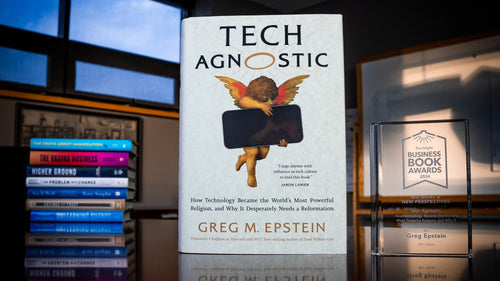Hidden Potential | An Excerpt from the Personal Development & Human Behavior Category
As Porchlgiht's Creative Director Gabbi Cisneros recenlty wrote, Adam Grant's Hidden Potential offers opportunities well beyond our own personal development.
[T]here is greater potential for those who read this book to create more equal systems of opportunity. Better understanding how to unlock our own potential is just the first step to revealing the potential in students, teams, and organizations.
The following excerpt comes from chapter 8 and explains why brainstorming sessions are usually the wrong way to find the best ideas.

MANY BRAINS MAKE LIGHT WORK
When we’re confronting a vexing problem, we often gather a group to brainstorm. We’re looking to get the best ideas as quickly as possible. I love seeing it happen … except for one tiny wrinkle. Brainstorming usually backfires.
In brainstorming meetings, many good ideas are lost—and few are gained. Extensive evidence shows that when we generate ideas together, we fail to maximize collective intelligence. Brainstorming groups fall so far short of their potential that we get more ideas—and better ideas—if we all work alone. As the humorist Dave Barry quipped, “If you had to identify, in one word, the reason why the human race has not achieved, and never will achieve, its full potential, that word would be: ‘meetings.’”
The problem isn’t meetings themselves—it’s how we run them. Think about the brainstorming sessions you’ve attended. You’ve probably seen people bite their tongues due to ego threat (I don’t want to look stupid), noise (we can’t all talk at once), and conformity pressure (let’s all jump on the boss’s bandwagon!). Goodbye diversity of thought, hello groupthink. These challenges are amplified for people who lack power or status: the most junior person in the room, the sole woman of color in a team of bearded white dudes, the introvert drowning in a sea of extraverts.

To unearth the hidden potential in teams, instead of brainstorming, we’re better off shifting to a process called brainwriting. The initial steps are solo. You start by asking everyone to generate ideas separately. Next, you pool them and share them anonymously among the group. To preserve independent judgment, each member evaluates them on their own. Only then does the team come together to select and refine the most promising options. By developing and assessing ideas individually before choosing and elaborating them, teams can surface and advance possibilities that might not get attention otherwise.
Research by Anita Woolley and her colleagues helps to explain why this method works. They find that another key to collective intelligence is balanced participation.* In brainstorming meetings, it’s too easy for participation to become lopsided in favor of the biggest egos, the loudest voices, and the most powerful people. The brainwriting process makes sure that all ideas are brought to the table and all voices are brought into the conversation. Sure enough, there’s evidence that brainwriting is especially effective in groups that struggle to achieve collective intelligence.
Collective intelligence begins with individual creativity. But it doesn’t end there. Individuals produce a greater volume and variety of novel ideas when they work alone. That means that they come up with more brilliant ideas than groups—but also more terrible ideas than groups. It takes collective judgment to find the signal in the noise.
*Interestingly, smarter teams also tend to have higher proportions of women. The key reason is that on average, women outperform men in tests of reading other people’s thoughts and feelings. It’s not clear whether they’re more capable or more motivated to use prosocial skills, but there’s a case to be made that women tend to instill these skills in their teams. Both economists and psychologists find that good team players motivate the rest of the group to contribute more. And when a law professor studied corporate boardroom dynamics, he found that as women joined Norwegian boards, they were more likely to actually read the materials before the meeting. Not wanting to be unprepared and outdone, men picked up the norm and started doing their homework too.
From HIDDEN POTENTIAL by Adam Grant, published by Viking, an imprint of Penguin Publishing Group, a division of Penguin Random House, LLC. Copyright © 2023 by Adam Grant.



